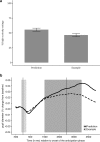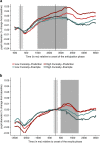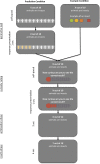Lighting the wick in the candle of learning: generating a prediction stimulates curiosity
- PMID: 31646002
- PMCID: PMC6803639
- DOI: 10.1038/s41539-019-0056-y
Lighting the wick in the candle of learning: generating a prediction stimulates curiosity
Abstract
Curiosity stimulates learning. We tested whether curiosity itself can be stimulated-not by extrinsic rewards but by an intrinsic desire to know whether a prediction holds true. Participants performed a numerical-facts learning task in which they had to generate either a prediction or an example before rating their curiosity and seeing the correct answer. More facts received high-curiosity ratings in the prediction condition, which indicates that generating predictions stimulated curiosity. In turn, high curiosity, compared with low curiosity, was associated with better memory for the correct answer. Concurrent pupillary data revealed that higher curiosity was associated with larger pupil dilation during anticipation of the correct answer. Pupil dilation was further enhanced when participants generated a prediction rather than an example, both during anticipation of the correct answer and in response to seeing it. These results suggest that generating a prediction stimulates curiosity by increasing the relevance of the knowledge gap.
Keywords: Education; Human behaviour.
© The Author(s) 2019.
Conflict of interest statement
Competing interestsThe authors declare no competing interests.
Figures



References
-
- Wikiquote. William Arthur Ward. https://vi.wikiquote.org/wiki/William_Arthur_Ward. (2019)
-
- Jirout J, Klahr D. Children’s scientific curiosity: in search of an operational definition of an elusive concept. Dev. Rev. 2012;32:125–160. doi: 10.1016/j.dr.2012.04.002. - DOI
-
- Litman JA. Interest and deprivation factors of epistemic curiosity. Personal. Individ. Differ. 2008;44:1585–1595. doi: 10.1016/j.paid.2008.01.014. - DOI
-
- Berlyne DE. A theory of human curiosity. Br. J. Psychol. 1954;45:180–191. - PubMed
LinkOut - more resources
Full Text Sources
Miscellaneous

